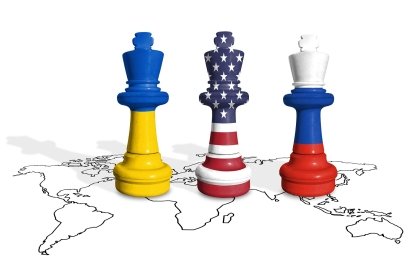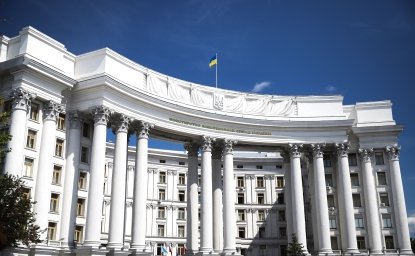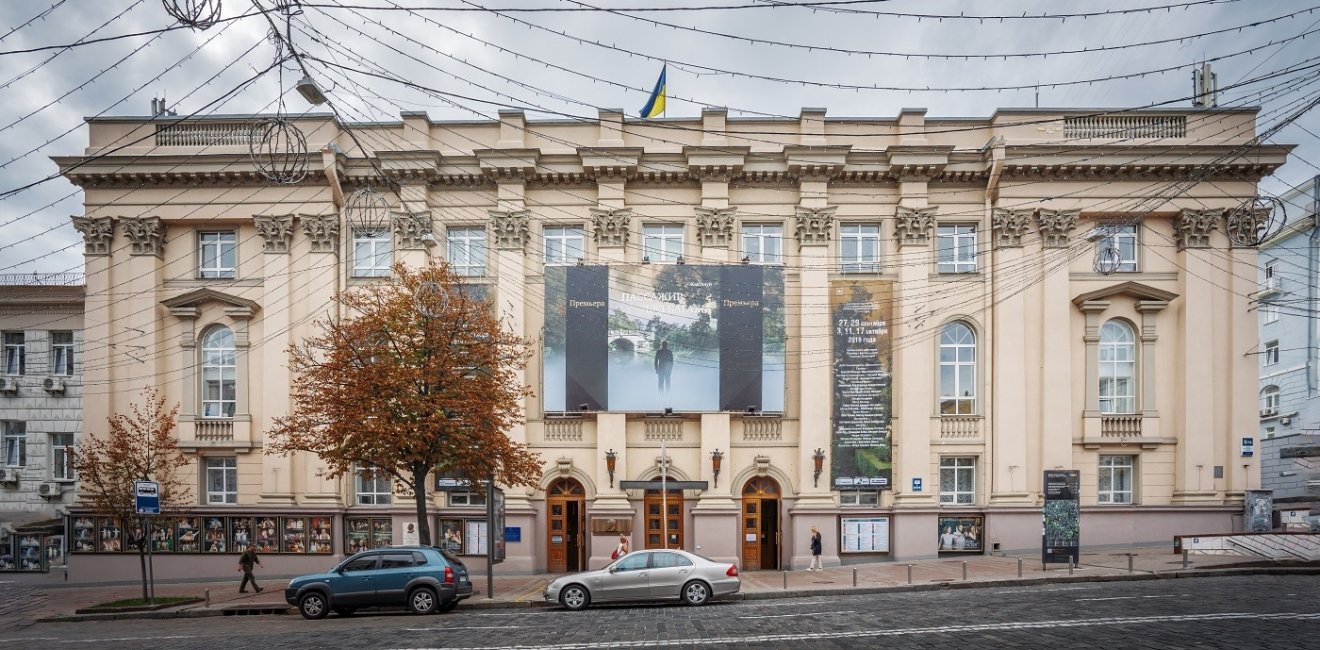
A blog of the Kennan Institute
The beautiful jacaranda tree bursts into bloom as spring arrives, heralding a change in seasons. At first glance, this symbolism might appear to be lost on Ukrainian audiences who have never seen such a tree. But the blossoms’ reputation for beauty precedes it so that the tree’s symbolism resonates even in Ukraine.
August 4 and 5 proved to be noteworthy days for Kyiv’s Lesya Ukrainka National Academic Drama Theater. After Herculean efforts thwarted by COVID restrictions and war, the company premiered a new Ukrainian-language version of Alejandro Casona’s revered Jacaranda Blossom. The play is based on Spanish poet and playwright Casona’s Lós árboles mueren de pie (Trees Die Standing Up). The well-known Spanish adage that serves as the play’s title refers to the strength of the human spirit and the need to preserve honor and dignity in the most difficult life circumstances.
The Russian incarnation of Casona’s family drama was a Soviet-era mainstay for repertoire companies to showcase their stars. Director Kyrylo Kashlikov created a new star vehicle featuring two pairings of his theater’s most celebrated actors: Serhii Berezhko and Nina Nizheradze as well as Viktor Aldoshin and Lidia Yaremchuk. The evening was more than the launch of a new repertoire with star power. Casona’s play turns out to have added poignance at this moment of war.
First performed in 1949 in Buenos Aires at the famous Teatro Ateneo (now one of the most spectacular bookstores anywhere), Jacaranda Blossom tells a complicated tale of loss, redemption, gratitude, and simple human values. A family patriarch, Mr. Balboa, throws his rogue grandson out of the house and, when his wife becomes depressed, starts writing letters supposedly from the missing youth. Eventually, the grandson is to return but is lost at sea. Balboa hires a young couple, Mauricio and Isabel, to pose as the grandson and his bride. The real grandson returns, but the grandmother, having discovered the ploy, continues to treat Mauricio and Isabel as if they were her real grandson and granddaughter-in-law. The play turns on the human need to convert illusions into reality. At the end, the grandmother gives her supposed grandchildren a recipe for liqueur and a piece of the jacaranda tree to symbolize the joy they have brought to her life.
Casona’s left-oriented political views and exile made him a suitable playwright for Soviet theater. His plays and poetry were popular throughout South America and several of his plays, including what would become Jacaranda Blossom, were produced in the United States even during the height of the Cold War. He had hit full creative stride by the mid-1930s, working on plays, adaptations of classics, and screenplays while promoting the progressive values of the Second Spanish Republic. Generalissimo Francisco Franco’s victory during the Spanish Civil War forced Casona into exile. He headed to Mexico, settled in Buenos Aires for nearly three decades, returned to Spain in 1962, and died in Madrid in 1965.
His play takes its ending image from the impressive trees whose purple-blue flowers are well known throughout their native South and Central America, lining college campuses and the great avenues of major cities. According to Amazonian folklore, a beautiful young woman and a magical bird named Mitu flew to the top of a jacaranda tree and dispensed divine knowledge to common people. Once done, she retreated to the tree as the moon goddess and rises to heaven to be with her lover, the sun god’s son. Blooming in spring, the tree’s bright blossoms symbolize rejuvenation and reincarnation and signify great luck, creativity, and well-being.
A second, colonial-era, fable surrounding the jacaranda may be of even greater relevance to contemporary Ukraine. According to this myth, the daughter of the Spanish invaders, Pilar, falls in love with the Spanish-speaking son of an indigenous family, M’barete. When the Spanish father uncovers their liaison, he tracks them down in the jungle and kills them. The Jesuit priests who set out to recover their bodies discover that they have flowered as a jacaranda tree.
These powerful stories have appealed to theater companies in Ukraine, such as that of the Lesya Ukrainka theater. As noted in a previous blog post, that theater is among Kyiv’s oldest, dating back to the Solovtsov acting troupe of the 1890s. The company thrived during the Soviet era as the Russian Drama Theater, gaining a reputation as one of the Soviet Union’s leading dramatic ensembles. Its post-independence transition proved rocky, but by the end of the 2010s, it had reinvented itself as an increasingly innovative and contemporary company performing more and more in the Ukrainian language. The 2022 Russian invasion completed the transition, with the company dropping the adjective Russian from its name and reorienting its performance schedule around works in Ukrainian.
The remount of the Jacaranda Blossom in a new Ukrainian translation represents another step in that transition. The play’s resurrection is about more than theatrical nostalgia and vehicles for famous actors. At its core, the play, like Casona’s original Spanish title, reflects on the strength of humans to withstand tragedy and heartbreak as well as the magic that the human spirit unleashes to reinvigorate hopeless souls. Each human makes his or her own choices along the path of life, choices which, when wisely considered, may lead to the luck, creativity, and well-being symbolized by the jacaranda tree. The grandmother’s parting gift of a jacaranda tree is one of healing not only for her own family, but, in this production, for Ukrainian society at a moment of heart-wrenching travail.
The opinions expressed in this article are those solely of the author and do not reflect the views of the Kennan Institute
Author

Former Wilson Center Vice President for Programs (2014-2017); Director of the Comparative Urban Studies Program/Urban Sustainability Laboratory (1992-2017); Director of the Kennan Institute for Advanced Russian Studies (1989-2012) and Director of the Program on Global Sustainability and Resilience (2012-2014)

Kennan Institute
The Kennan Institute is the premier US center for advanced research on Eurasia and the oldest and largest regional program at the Woodrow Wilson International Center for Scholars. The Kennan Institute is committed to improving American understanding of Russia, Ukraine, Central Asia, the South Caucasus, and the surrounding region though research and exchange. Read more

Explore More in Focus Ukraine
Browse Focus Ukraine
Russia's Gas Transit through Ukraine: End of an Era?

Five Points to Remember Before Dealing with Putin

As the Length of the War Began to be Measured in Weeks


